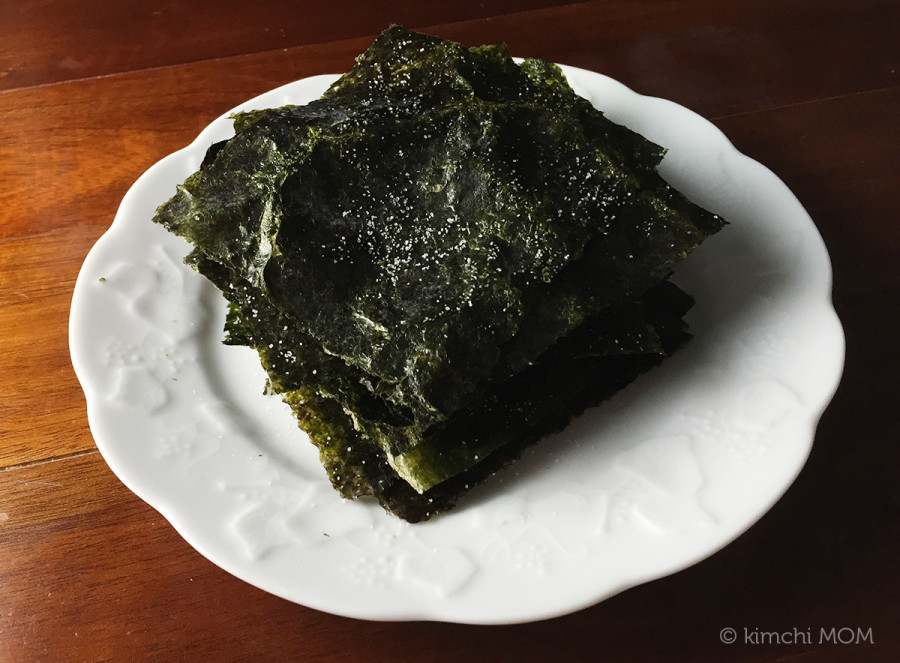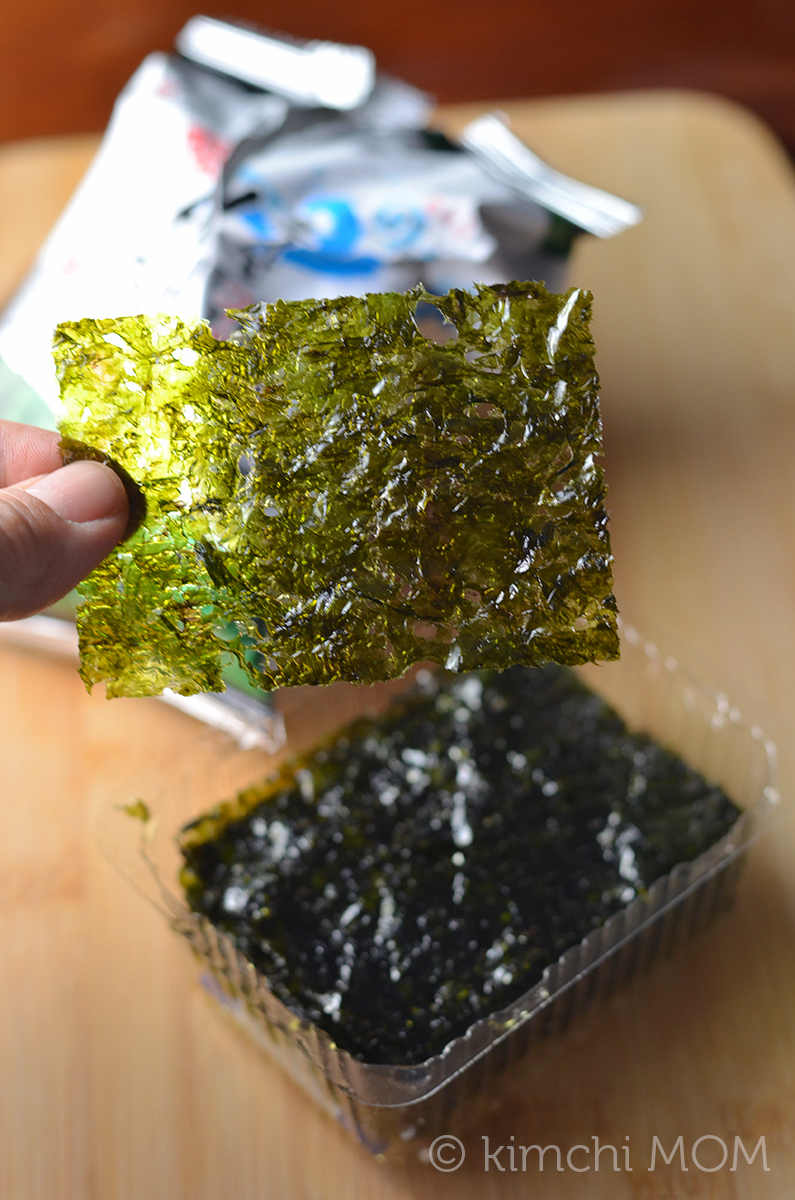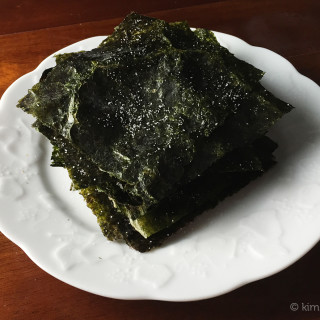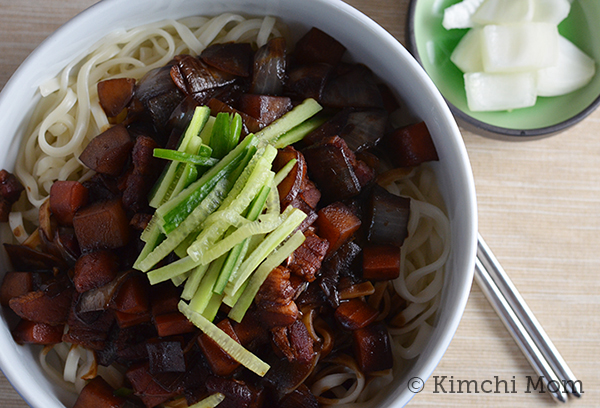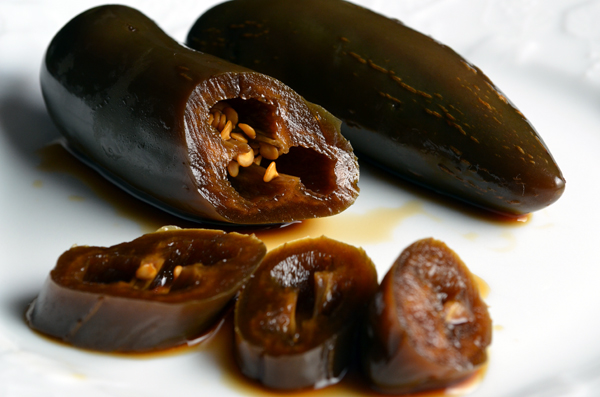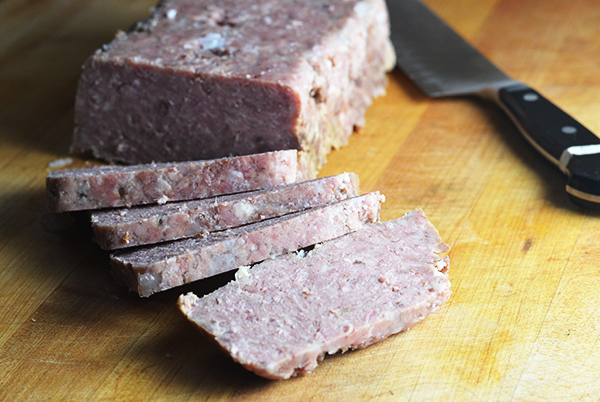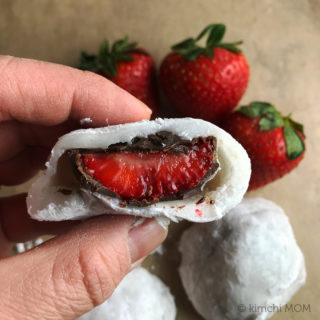These salty, crunchy paper-thin sheets of dried seaweed (laver or gheem) are being stocked on shelves in mainstream grocery stores. It used to be (even just 5 years ago), that I had to trek to my nearest Asian grocery store to stock up my pantry. Now I see the small cartons being sold at Whole Foods and Trader Joe’s. A little pricier than what I’m used to paying but nonetheless more accessible.
They are being marketed as snacks, but I grew up having them as a vessel for my rice. They appeared at the dinner table almost every night alongside the dish of kimchi. Although, back then, my mom roasted her own sheets of laver. My grandmother in Korea shipped us several reams (?) of unseasoned laver which would last us about 6 months.
Roasted laver filled the house with a smoky, briny aroma. When I was little, I watched my mom or dad gingerly waving the black square sheet over the burner on the stove with wisps of smoke curling and disappearing in the air. Every now and then when a sheet lingered a second too long over the burner, a small flame flashed before it was blown out. Inevitably, my dad’s sensitive nose would prompt him to click on the hood fan.
Soon enough I was old enough to take on the gheem-roasting duty. I sat at the kitchen table with a pile of the shiny purply-black sheets of laver, a small bowl with a couple of tablespoons of the light brown sesame oil, and a salt shaker. I had a large plate in front of me. I took each sheet from the pile, placed it on the plate, dipped my two fingertips (index and middle) into the sesame oil and applied a light film onto the laver, and then sprinkled salt onto the oiled laver. I repeated this for every sheet until the pile off to the side had transferred to the pile on the plate in front of me.
The next step was the fun part. Waving those sheets of laver over the electric coils on the stove. As I gingerly waved the sheet over the coils, the sheet crinkled and slowly turned a shade of dark green.
I recently roasted my own gheem at home when I ran out of the packaged gheem I’ve been buying at HMart. The aromas instantly transported me back to my mom’s kitchen.
It is so easy, so much less expensive than the packaged stuff at the store, AND it is so much more flavorful. I urge you to try this at home. Check your local grocery store for unseasoned laver or nori. Or order it online from amazon.com. Also note that Japanese nori tends to be a little thicker than the Korean laver. The Korean version is preferred for its more delicate and lighter texture (see second photo), but nori is sufficient if you can’t find any Korean brands for laver.
Roasted Seasoned Dried Seaweed (Gheem Gui / 김구이)
Ingredients
- Unseasoned sheets of laver dried seaweed
- Sesame seed oil
- Fine sea salt
Instructions
- Start with MEDIUM-LOW heat on an electric stove OR LOW heat on a gas stove. Adjust accordingly as you are roasting the laver.
- Holding one corner of the sheet, quickly graze the laver over the heat source until roasted or until it starts to crinkle. Repeat for as many sheets as desired. Place the roasted seaweed aside on a plate.
- Reserve a couple of tablespoons of sesame seed oil in a small bowl. With your fingers (or a brush), apply a light coat of oil on each sheet of roasted seaweed. Season with a light layer of salt. Repeat for the remaining sheets.
- With a pair of kitchen shears, cut the sheets into quarters.
- Store the seaweed in a Ziploc storage bag. It should keep for a few days.
Oh, and here’s a video to show you how to make this at home!
